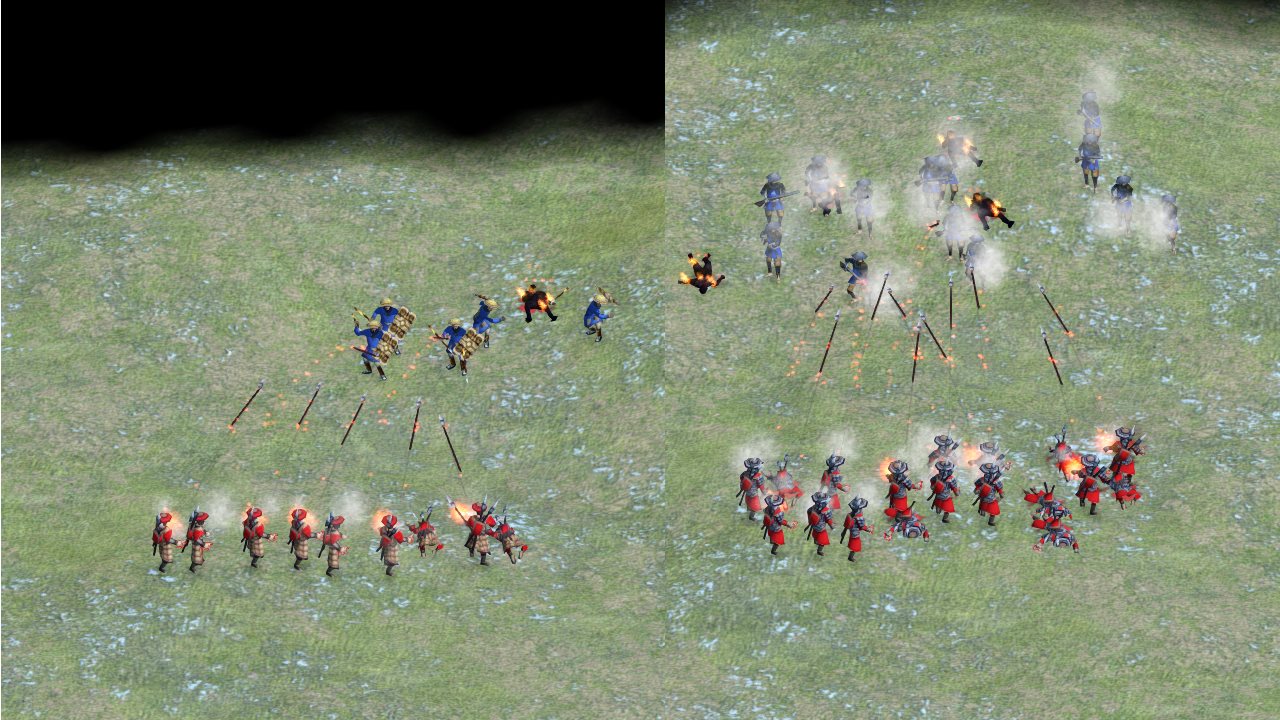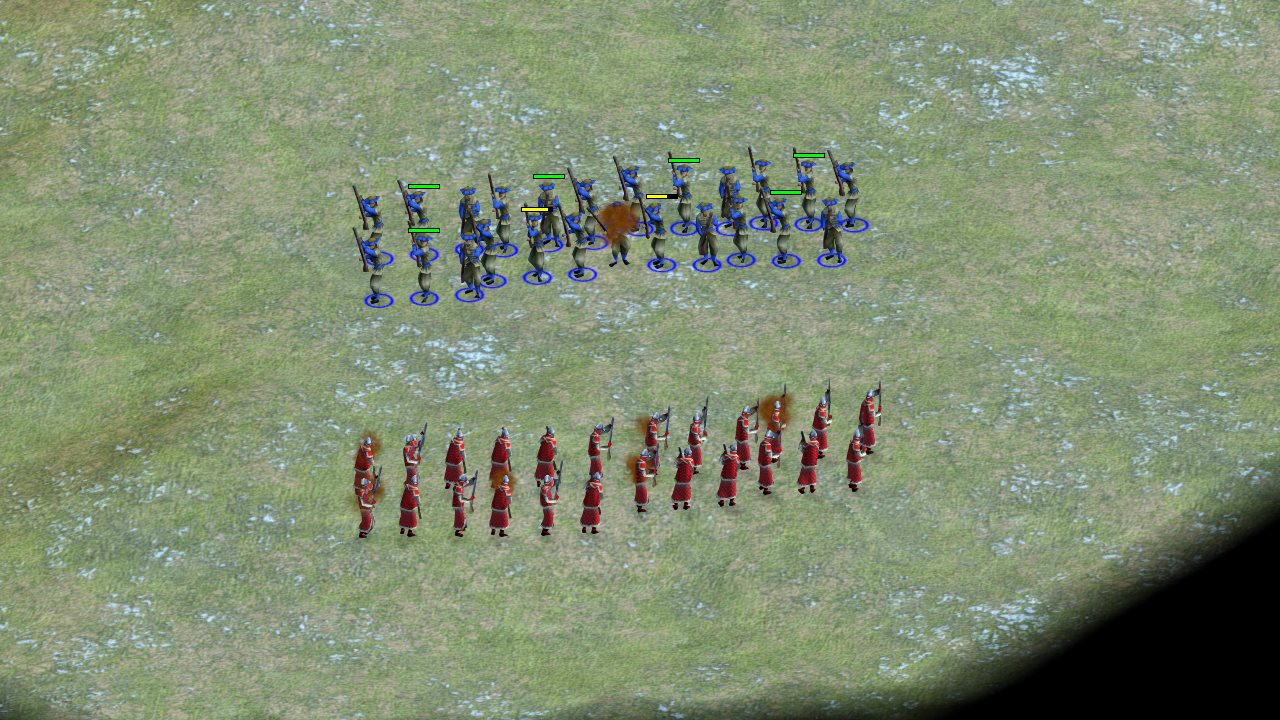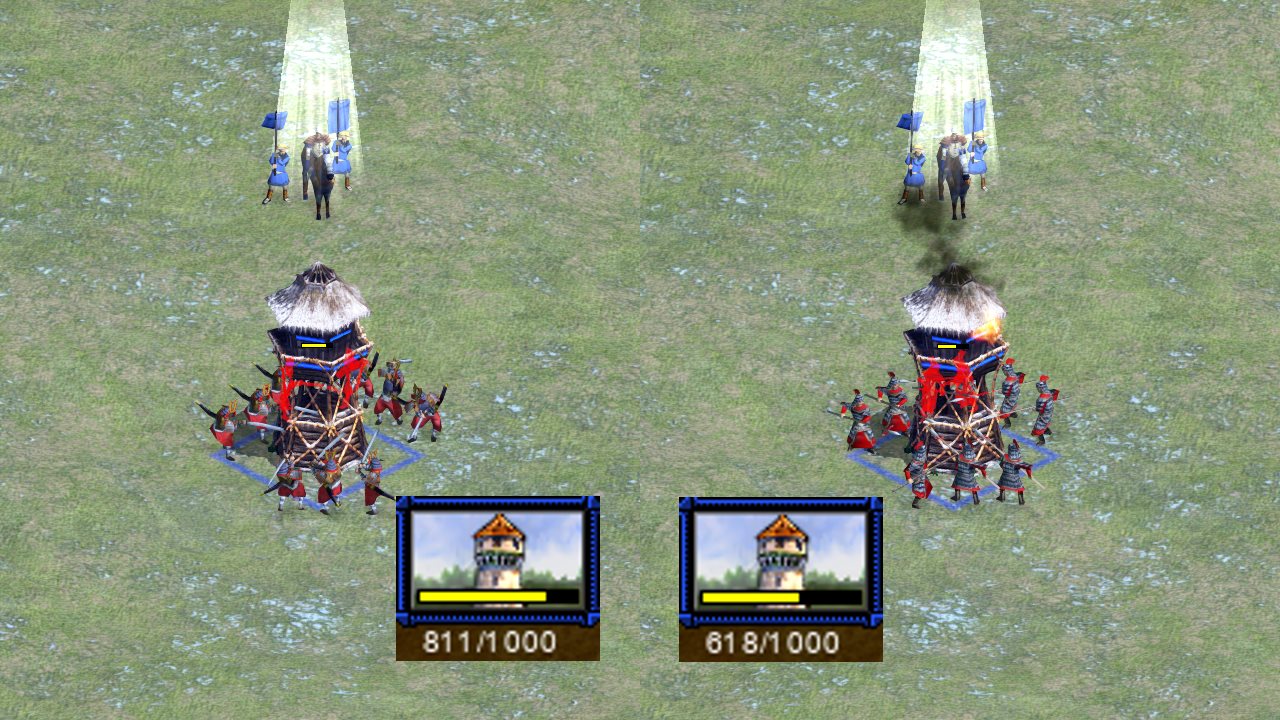Unique units are generally intended to be a stronger version of the unit they replace. They typically have superior stats and/or are cheaper or faster to produce. A few (such as American Marines) gain a unique ability.
The Korean-specific Royal Hwarang, which replace Crossbowmen, have +10 hit points and +2 attack strength. Despite these benefits, Royal Hwarang actually lose a fight to an equal number of Crossbowmen.
Fire Lances, a Chinese unique unit, are one of the strongest units in the game on paper. Compared to the Elite Javelineers which they replace, they boast +1 attack strength, +4 attack range, +3 line of sight, and a +33% damage boost against all units because they qualify as being gunpowder infantry. Despite their vastly superior damage, they usually only just outperform Elite Javelineers in non-melee combat when you discount their range and line of sight advantage.
Let’s explore why.
Attack Animations: Fire Lances and Friends
As you have likely deduced from this article’s title and introduction, both attack animations and projectile speed make a significant difference in a unit’s combat power.
For ranged units, attack animations can be broken down into the following loop:

- Pre-fire (windup) animation. This is the animation that must occur after a unit has decided what to attack, but before a projectile is released.
- Projectile is fired.
- Post-fire (winddown) animation. Units in this stage can have their attacks canceled without impacting their projectile since the projectile is already in the air.
- Acquire target / “reload”.1 This stage occurs before stage 1 and after stage 3 – either a unit is preparing to fire on a new target, or has just fired and will pause for a brief moment before beginning their next attack.
Most units have short-to-moderate windups (stage 1) and then combined moderate-to-long winddowns and acquisition/reload cycles (stages 3+4). Fire Lances break this mold by having a very long windup.
When a target-unit dies, units that are preparing to fire at that unit will cancel their attack and then prepare a new attack against a different target. However, due to their long windup Fire Lances are awful at doing this, and waste a disproportionate amount of time preparing to fire at invalid (dead) targets.
This in turn affects their damage output (in DPS), so instead of doing nearly 40% more DPS than their counterparts, they often only do 10-25% more.

Projectile Speed: Crossbows and Guns
Speaking of Heavy Fire Lances, one of the reasons they bother me so much is because in Age 4 everyone has access to guns, but the Chinese refuse to use them in their infantry. Guns fire bullets instead of arrow-type objects, and bullets travel significantly faster than arrows.
That means that in addition to having awful attack animations, Heavy Fire Lances also suffer from awful projectile speeds compared to their non-unique counterpart.
Having high projectile speed means each unit killed suffers from less overkill; if you only need 5 arrows to kill an enemy unit but your archers use 8, then you’ve wasted 3 arrows. Although there is always some amount of lag or delay between a ranged unit’s attack and a target being hit, higher projectile speeds reduce overkill by reducing the delay between a target-that-will-die (due to projectiles in flight) and a target that is actually dead (projectiles have landed). Less overkilling of dead targets means more killing of living targets.
When it comes to projectile speed, crossbows in Rise of Nations function more like guns than bows. Their projectiles are quite fast and have minimal arc, so their total flight time is low.

Speaking of guns: they’re great. Bullets have near-instant travel time and guns give you the same juicy all-unit 33% damage bonus which Fire Lances otherwise unlock an age early. In regards to projectile speed, they’re essentially the best you can get. The large guns on Tanks are a little slower, but generally speaking guns have the lowest projectile speed out of any type of projectile based weapon (as you might expect).
Another great part about guns is that they fire in almost-straight lines, angled slightly downwards. That means that even when a target is overkilled, the “overkill bullets” actually have a good chance to damage targets around and behind the initial target – much like with arrows and the like, they are not absorbed by the dead unit2 and can still deal damage if a living unit steps into their flight path. Crossbows inherit some of this advantage, although the benefit is reduced due to the lower speed and higher arc of crossbow bolts.3

Wrapping Up
Although combat in Rise of Nations is generally fairly intuitive and units follow general rules (rock paper scissors counters for example), there are moments when a unit’s actual power level is deceptive. Intuitively, an inexperienced player would reasonably expect the unique unit replacements for Crossbowmen would always be better than Crossbowmen because they have superior stats, but that’s not always the case.
Obscure or hidden power like this is unfortunate, as it can be frustrating to discover in the field; the game implies that a unit should be one thing and you find out that it’s not. There are other cases of this happening outside of attack animations and projectile speed, but these seem to be the two most common culprits.
It’s a shame that these cases exist, as they make the game more difficult to learn for new players while adding complexity that offers little reward or payoff for understanding. Explaining to a friend that units follow a “rock paper scissors” counter system is good. Explaining to a friend that the “better” unit is actually worse? Not so much.

- I put “reload” in quotes because some of this downtime is not spent on the physical act of reloading, but is simply a result of attack speed that is lower than the attack animation animates for.
- At least not all of them; I’m not sure if dead units can absorb some or none of “live” projectiles before those projectiles are able to check for living targets in their flight path.
- Higher arcs mean that an “overkill projectile” will travel less distance after missing their initial target. The lower vertical drop-off of projectiles with low arcs means that projectiles like bullets (and to a lesser degree crossbows) have a greater chance of hitting a different target if their initial target is killed.
